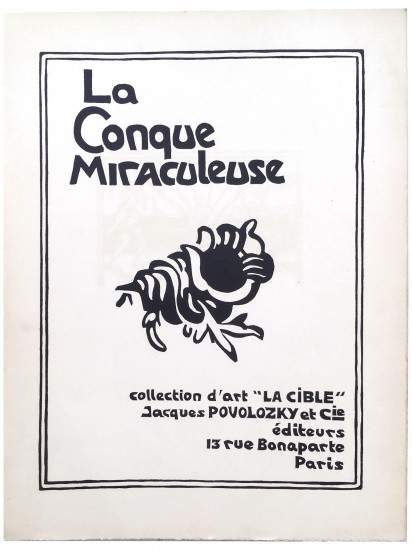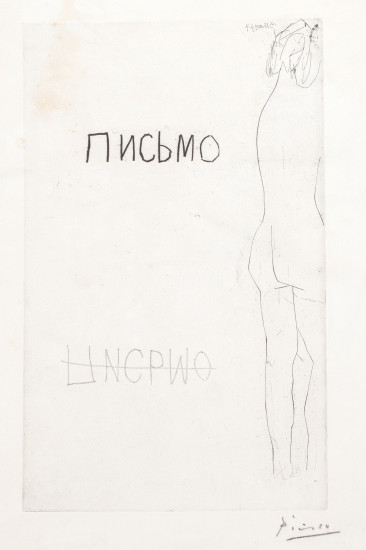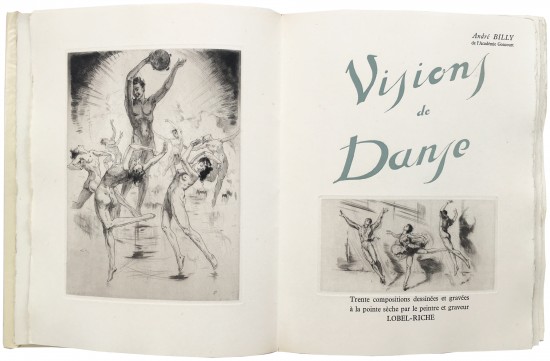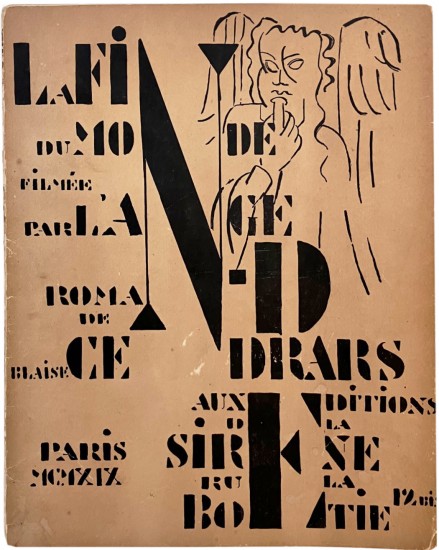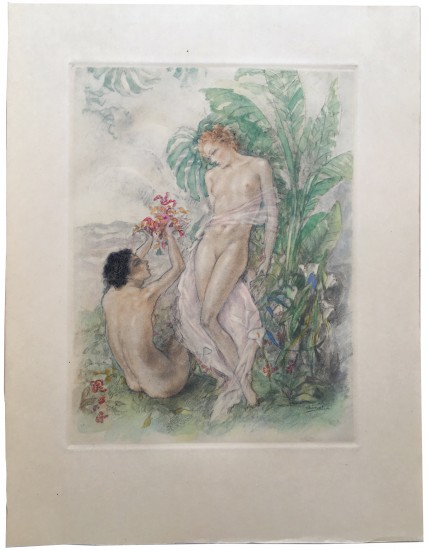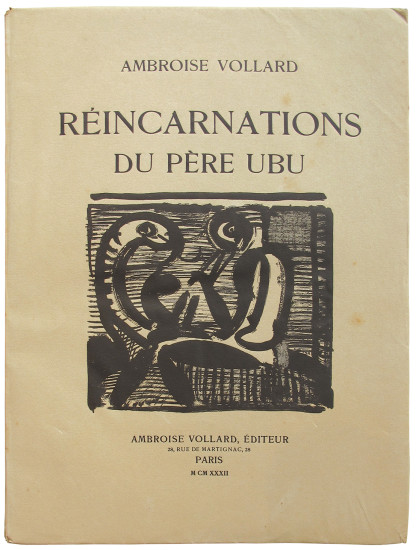Bulletin de 'l'Effort Moderne'. No. 1. (Janvier 1924). - No. 40. (Décembre 1927). (All Published)
Rosenberg, Léonce
Paris. Imprimerie Union (nos. 1 - 27) / Imprimeris Moderne des Beaux Arts (28 - 30) / Imprimerie des Lettres et des Arts (31 - 33) / Les Presses Modernes (34 - 40) [for] Editions de l'Effort Moderne. 1924–1927
A scarce complete set of Léonce Rosenberg's 'Bulletin de 'L'Effort Moderne' with all the wrappers by Georges Valmier.
'Est-ce que le Créateur, lui-même, ne serait pas le premier Cubiste?' (Maurice Raynal).
Léonce Rosenberg (1879 - 1947), like his brother Paul (1881 - 1959), was a major dealer in art during the early years of the twentieth century. When Daniel-Henry Kahnweiler, the pre-eminent dealer in Cubism in Paris, was barred as a German from owning a business in France and had his collection seized by the French state, it was Léonce Rosenberg who was the primary beneficiary. Encouraged, at least initially, by Picasso as well as André Level and Juan Gris, Rosenberg began to buy Cubist paintings and by the end of the war in 1918 had contracts with many of the foremost Cubists including Gris, Georges Braque, Herbin, Metzinger, Léger, Laurens, Severini and others. His gallery 'Haute Epoque' (founded after Léonce and Paul separated commercially in 1910) was renamed 'Galerie de l'Effort Moderne' and the focus was altered to the avant-garde in general and Cubism in particular.
The 'Galerie de l'Effort Moderne' from 1918 began a concerted campaign to promote Cubism - its first year included solo exhibitions for Auguste Herbin, Henri Laurens, Jean Metzinger, Fernand Léger, Georges Braque, Juan Gris, Gino Severini and Pablo Picasso - as an active movement with a theoretical framework, a firm tradition with historical roots and, perhaps of most importance, a future. One aspect of Rosenberg's planning was publishing and intellectual support for his project was provided by a series of books, Rosenberg's 'Cubisme et Tradition' and 'Cubisme et Empirisme', Piet Mondrian's 'Le Néo-Plasticisme', the 'Les Maîtres du Cubisme' series with their singular focus on a single artist (Gris, Braque, Picasso, Léger et al), but also by the review he founded, the 'Bulletin de l'Effort Moderne'.
The 'Bulletin' with its striking covers by Georges Valmier provided a literary and intellectual forum both for Cubism and the wider world of art and provided perhaps most importantly a very extensive corpus of illustration not only of painting but of all of the arts. Each issue features 8 leaves of monochrome images (for nos. 21 - 30 four leaves only were included) of work by all of the most important artists - a full list would include almost everyone of note and in every field - of the day. Significant literary contributions were by Maurice Raynal, Henri van de Velde, Gino Severini, Albert Gleizes, Jean Metzinger, Pierre Reverdy, J.-J..-P. Oud on architecture, Fernand Léger, Léonce Rosenberg himself, Florent Fels, Piet Mondrian and many others. The 'Bulletin' ran to 40 numbers, recovering midway from a reduction in text and image content (nos. 21 - 30), surviving several changes of printer (the final issues were printed by companies overseen by Rosenberg's daughter Lucienne), a lessening of advertising revenue but never by a decline in quality of text or illustration. A cynic might point to the fact that much of the text consisted of the serialisation of books published by Rosenberg's Editions de l'Effort Moderne but that would be to misconstrue and underestimate the scope of Rosenberg's vision.
This set includes the additional leaves inserted into nos. 3 and 13 detailing a rise in price of the numbers and the abonnement; no. 17 includes two inserted leaves of blank glossy paper, presumably in error; no. 18 includes a small errata label with the printed text 'J. W. Power' pasted over 'Max Ernst'; no. 19 features a slip detailing the availability of back numbers of the 'Bulletin'; no. 35 includes an inserted slip noting an error in print size on the part of the 'clicheur' but with the additional detail of bonus images in compensation.
Complete sets of the 'Bulletin' are scarce and we can locate only a single complete series at auction, that sold by Artcurial in Paris in 2009. In libraries the 'Bulletin' is also scarce with OCLC reporting six complete sets in France, as well as copies at the British Library, National Library of Australia, the Schweiz Institut Kunstwissenschaft and the Swedish Kunglinga Biblioteket as well as two copies in Holland; in the US we can locate only the copy held at the Menil Collection in Houston.
In terms of condition this is a very good set albeit removed from a binding, restitched and with thin paper reinforcement to each spine. All of Valmier's original wrappers (the two versions for issues 1 - 27 and 28 - 40) are preserved and remain bright and fresh. The wove paper for some issues is toned and on occasion brittle with some very few chips but overall this remains a very good example of a scarce publication.
[Le Fonds Paul Destribats 228].
'Est-ce que le Créateur, lui-même, ne serait pas le premier Cubiste?' (Maurice Raynal).
Léonce Rosenberg (1879 - 1947), like his brother Paul (1881 - 1959), was a major dealer in art during the early years of the twentieth century. When Daniel-Henry Kahnweiler, the pre-eminent dealer in Cubism in Paris, was barred as a German from owning a business in France and had his collection seized by the French state, it was Léonce Rosenberg who was the primary beneficiary. Encouraged, at least initially, by Picasso as well as André Level and Juan Gris, Rosenberg began to buy Cubist paintings and by the end of the war in 1918 had contracts with many of the foremost Cubists including Gris, Georges Braque, Herbin, Metzinger, Léger, Laurens, Severini and others. His gallery 'Haute Epoque' (founded after Léonce and Paul separated commercially in 1910) was renamed 'Galerie de l'Effort Moderne' and the focus was altered to the avant-garde in general and Cubism in particular.
The 'Galerie de l'Effort Moderne' from 1918 began a concerted campaign to promote Cubism - its first year included solo exhibitions for Auguste Herbin, Henri Laurens, Jean Metzinger, Fernand Léger, Georges Braque, Juan Gris, Gino Severini and Pablo Picasso - as an active movement with a theoretical framework, a firm tradition with historical roots and, perhaps of most importance, a future. One aspect of Rosenberg's planning was publishing and intellectual support for his project was provided by a series of books, Rosenberg's 'Cubisme et Tradition' and 'Cubisme et Empirisme', Piet Mondrian's 'Le Néo-Plasticisme', the 'Les Maîtres du Cubisme' series with their singular focus on a single artist (Gris, Braque, Picasso, Léger et al), but also by the review he founded, the 'Bulletin de l'Effort Moderne'.
The 'Bulletin' with its striking covers by Georges Valmier provided a literary and intellectual forum both for Cubism and the wider world of art and provided perhaps most importantly a very extensive corpus of illustration not only of painting but of all of the arts. Each issue features 8 leaves of monochrome images (for nos. 21 - 30 four leaves only were included) of work by all of the most important artists - a full list would include almost everyone of note and in every field - of the day. Significant literary contributions were by Maurice Raynal, Henri van de Velde, Gino Severini, Albert Gleizes, Jean Metzinger, Pierre Reverdy, J.-J..-P. Oud on architecture, Fernand Léger, Léonce Rosenberg himself, Florent Fels, Piet Mondrian and many others. The 'Bulletin' ran to 40 numbers, recovering midway from a reduction in text and image content (nos. 21 - 30), surviving several changes of printer (the final issues were printed by companies overseen by Rosenberg's daughter Lucienne), a lessening of advertising revenue but never by a decline in quality of text or illustration. A cynic might point to the fact that much of the text consisted of the serialisation of books published by Rosenberg's Editions de l'Effort Moderne but that would be to misconstrue and underestimate the scope of Rosenberg's vision.
This set includes the additional leaves inserted into nos. 3 and 13 detailing a rise in price of the numbers and the abonnement; no. 17 includes two inserted leaves of blank glossy paper, presumably in error; no. 18 includes a small errata label with the printed text 'J. W. Power' pasted over 'Max Ernst'; no. 19 features a slip detailing the availability of back numbers of the 'Bulletin'; no. 35 includes an inserted slip noting an error in print size on the part of the 'clicheur' but with the additional detail of bonus images in compensation.
Complete sets of the 'Bulletin' are scarce and we can locate only a single complete series at auction, that sold by Artcurial in Paris in 2009. In libraries the 'Bulletin' is also scarce with OCLC reporting six complete sets in France, as well as copies at the British Library, National Library of Australia, the Schweiz Institut Kunstwissenschaft and the Swedish Kunglinga Biblioteket as well as two copies in Holland; in the US we can locate only the copy held at the Menil Collection in Houston.
In terms of condition this is a very good set albeit removed from a binding, restitched and with thin paper reinforcement to each spine. All of Valmier's original wrappers (the two versions for issues 1 - 27 and 28 - 40) are preserved and remain bright and fresh. The wove paper for some issues is toned and on occasion brittle with some very few chips but overall this remains a very good example of a scarce publication.
[Le Fonds Paul Destribats 228].
40 vols. 8vo. (c.238 x 156 mm). Each issue with drop-head title, 'Sommaire' and 16 pages of printed text in French and illustrated throughout with 8 leaves of glossy paper with monochrome reproduction photographs (nos. 1 -20, nos. 21 - 30 with 8 pages of text and 4 leaves of glossy paper, nos. 31 - 40 as for the first 20 numbers) illustrating paintings, costume designs, sculpture, theatre and ballet sets and mise en scène, architecture, furniture and so on by various artists and designers &c. Original publisher's printed colour wrappers with titles and elaborate decorative design by Georges Valmier to front covers (nos. 1 - 27 with design in red, blue, black and white; nos. 28 - 40 with a different design in black, cream, pink and grey), advertisements to rear covers and wrapper interiors.
#48531

